Nature’s light shows
by Ailsa Harvey · 02/10/2019
Discover the living creatures and atmospheric conditions that can create some of the most spectacular illuminations on Earth
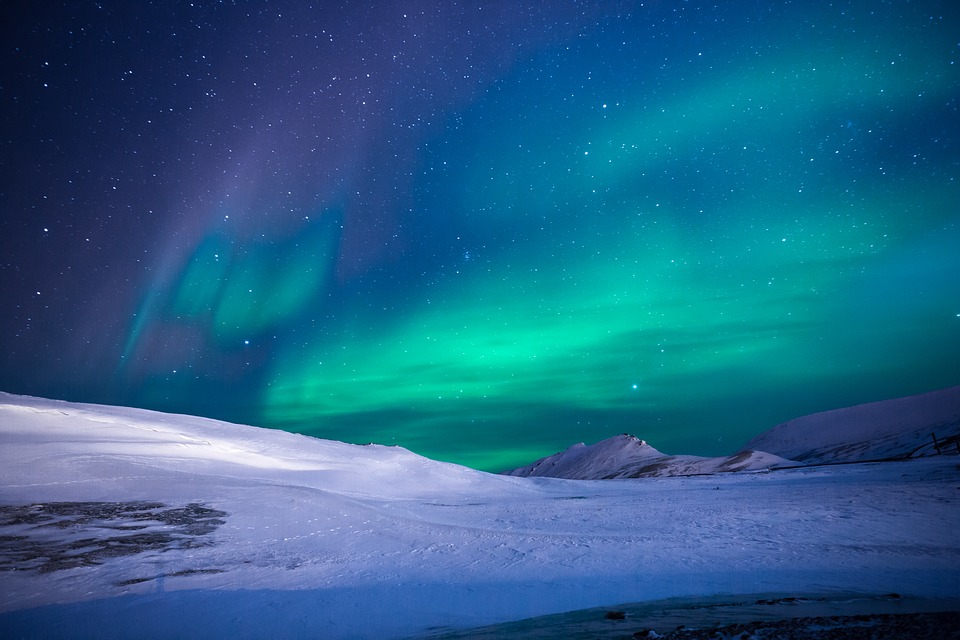
Auroras
In space, charged ion and electron particles are constantly escaping from the Sun’s gravitational field and travelling towards Earth at high speed. Most of them bounce off the Earth’s magnetic field, but some are funnelled through its weak spots by the North and South Poles. They then collide with oxygen and nitrogen atoms in the Earth’s atmosphere, causing them to give off particles of light called photons. Depending on where the collision takes place in the atmosphere, these photons appear as different colours.
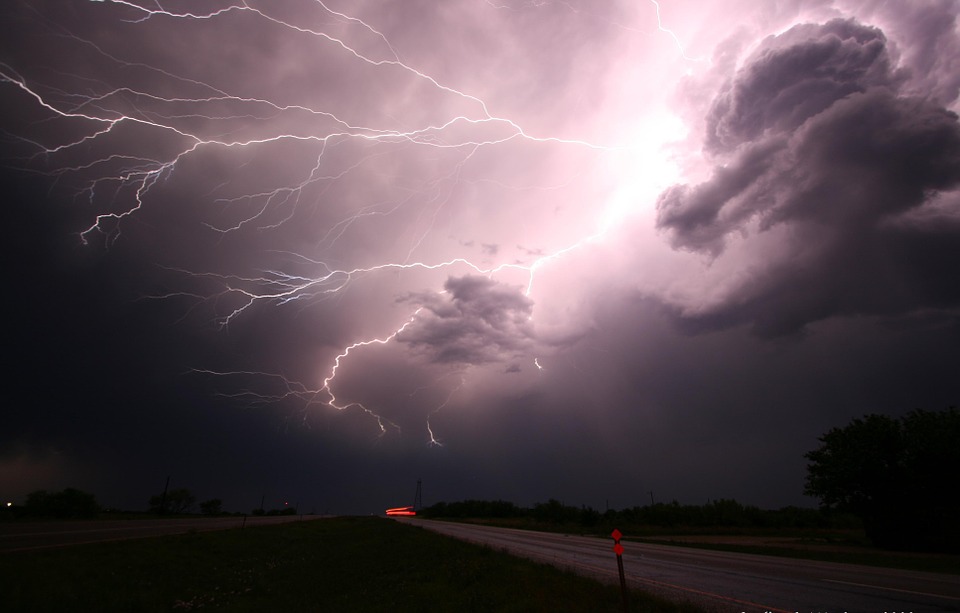
Lightning
Collisions between water droplets and particles of ice in storm clouds create a strong electric field, which separates atoms into positively charged protons towards the top of the cloud and negatively charged electrons towards the bottom. Eventually the charge builds up so much that electrons shoot towards the protons within the cloud or towards the positively charged ground in a flash of lightning.
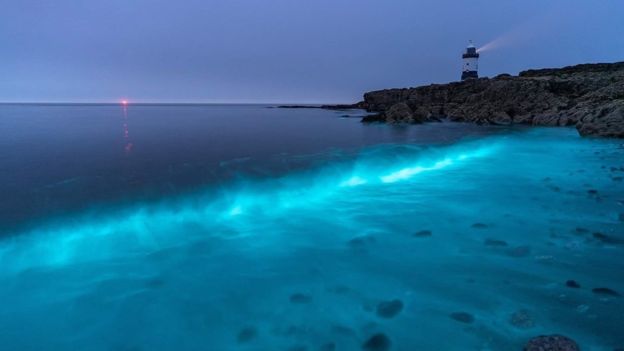
Bioluminescent phytoplankton
Various species of phytoplankton produce light, but the most common are dinoflagellates. Movement of predators within the water likely starts a chemical reaction, which causes a protein called luciferin to produce a bright blue light. This is thought to act as a form of defence against predators.
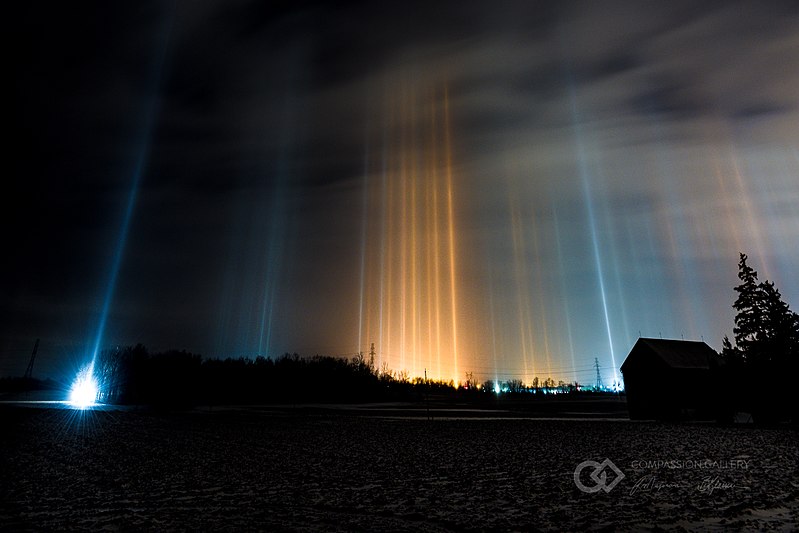
Light pillars
During the day time, flat ice crystals in the upper atmosphere can sometimes reflect the light from the Sun, creating a ‘Sun pillar’. However, when temperatures are below zero, these ice crystals can sometimes form nearer to the ground. There they can reflect light from streetlights and houses to create light pillars.
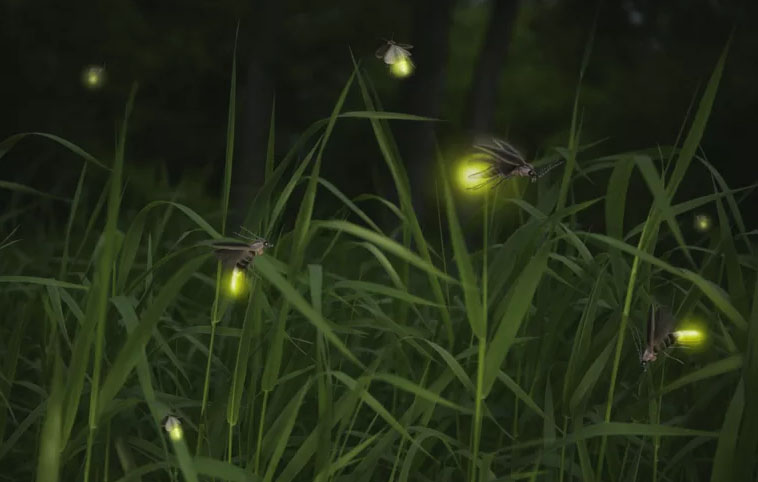
Fireflies
The cells inside a firefly’s abdomen contain the chemicals luciferin and adenosine triphosphate, as well as the enzyme luciferase. When these ingredients mix with oxygen, which is supplied to the cells through a tube in the insect’s abdomen, they emit light. Either by nerve cells or by controlling the flow of oxygen, the bug can turn the light on and off in quick bursts. In young firefly larvae, this light warns predators that the insect may contain toxic chemicals, while in adults it is used for selecting a mate. Light pillars During the day time, flat ice crystals in the upper atmosphere can sometimes reflect the light from the Sun, creating a ‘Sun pillar’. However, when temperatures are below zero, these ice crystals can sometimes form nearer to the ground. There they can reflect light from streetlights and houses to create light pillars.
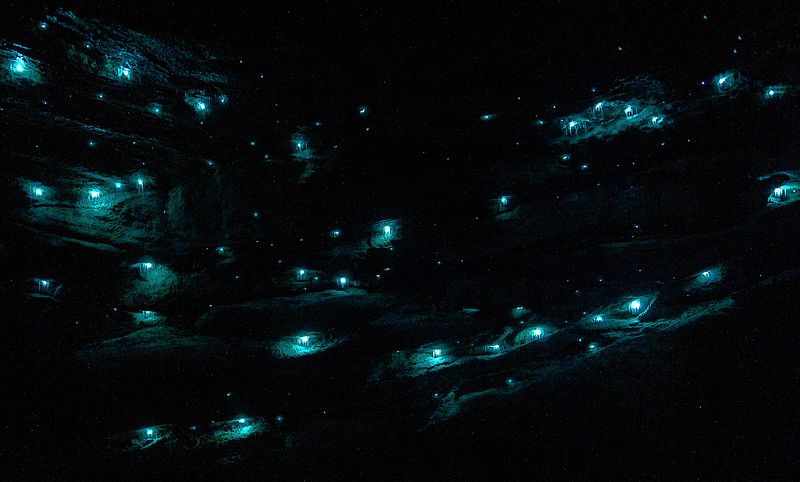
Glow worms
Glow worms are actually bioluminescent beetles, and they produce light in the same way that fireflies do. Only adult females of the species glow, as they use their light to attract flying males for mating.
This article was originally published in How It Works issue 100, written by Joanna Stass
For more science and technology articles, pick up the latest copy of How It Works from all good retailers or from our website now. If you have a tablet or smartphone, you can also download the digital version onto your iOS or Android device. To make sure you never miss an issue of How It Works magazine, subscribe today!




